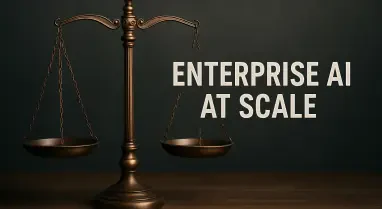In a world where technology evolves at an unprecedented pace, quantum computing stands out as a frontier that could redefine the boundaries of what’s possible, and two companies, MicroCloud Hologram and WiMi Hologram Cloud, are leading this transformative charge with groundbreaking innovations announced on October 1, 2025. Their advancements are not just incremental steps but seismic shifts that promise to tackle challenges classical computers struggle with, from securing data transmission to processing massive datasets. Quantum computing leverages the strange and powerful principles of quantum mechanics, such as superposition and entanglement, to perform calculations at speeds unimaginable with traditional systems. MicroCloud, a subsidiary of WiMi Hologram Cloud (NASDAWIMI), alongside its parent company, has unveiled technologies that address critical hurdles in this field, pushing quantum applications closer to practical reality. Their work focuses on optimizing communication networks for unparalleled security and accelerating data analysis for industries drowning in information. The potential impact spans telecommunications, healthcare, finance, and beyond, hinting at a future where quantum solutions are no longer experimental but integral to everyday operations. This exploration delves into the specifics of their contributions, examining how these innovations are reshaping the quantum landscape and why they matter in today’s tech-driven era. The journey from theory to application has never been more tangible, and understanding these developments offers a glimpse into a future powered by quantum capabilities.
Breaking New Ground with Quantum Link Efficiency
MicroCloud Hologram has introduced a transformative technology focused on quantum link efficiency optimization, a development that could fundamentally alter the landscape of secure communication and distributed computing. This innovation enhances the stability and fidelity of quantum data transmission by utilizing core quantum principles like entanglement and teleportation. Such advancements are vital for creating networks where data breaches are virtually impossible, as any attempt to intercept quantum information disrupts the system and alerts users. This capability holds immense promise for sectors like cybersecurity, where protecting sensitive information is paramount, and military communications, where secure channels can be a matter of national importance. The technology’s ability to maintain high-fidelity transmission over complex networks addresses one of the most persistent challenges in building a scalable quantum infrastructure, positioning MicroCloud as a key player in the race to establish a quantum internet.
Beyond the technical prowess, MicroCloud’s approach incorporates a novel routing algorithm inspired by natural systems, such as the behavior of ant colonies, to optimize data pathways in quantum networks. This method ensures efficient navigation through intricate systems, minimizing loss and maximizing speed, which are critical for real-world applications. The company’s commitment is further evidenced by a staggering investment of over $400 million in quantum and related technologies, signaling a deep dedication to pioneering the infrastructure needed for future quantum ecosystems. This financial backing not only fuels research but also accelerates the transition of quantum communication from a theoretical concept to a deployable solution. Industries reliant on secure data exchange, such as finance and government, stand to benefit immensely, as this technology could redefine global connectivity with a level of security that traditional systems simply cannot match. MicroCloud’s focus on enabling foundational elements underscores its strategic vision for a world where quantum networks are as commonplace as today’s internet.
Accelerating Data Insights with Quantum Clustering
WiMi Hologram Cloud is carving a distinct path in quantum computing by addressing the overwhelming challenge of big data through its quantum-assisted unsupervised data clustering technology. This hybrid solution integrates the raw computational speed of quantum systems with the reliability of classical neural networks, specifically leveraging the Self-Organizing Map (SOM) algorithm to process vast datasets with remarkable efficiency. By exploiting quantum properties like superposition for parallel processing, this technology drastically reduces the time and resources required for clustering tasks that often bog down traditional systems. The implications are particularly striking in fields like healthcare, where analyzing complex genomic data or patient records for personalized treatments can now be achieved at unprecedented speeds. WiMi’s innovation offers a glimpse into a future where data-driven decisions are not hindered by computational limitations but empowered by quantum precision.
Equally significant is the accessibility of WiMi’s approach, which avoids the need for a complete overhaul of existing infrastructure by blending quantum capabilities with classical frameworks. This pragmatic design ensures that industries can adopt quantum solutions without facing prohibitive barriers, making it a viable option for immediate integration. In finance, for instance, the technology’s ability to detect patterns in transactional data could revolutionize fraud prevention and optimize trading strategies, potentially saving billions annually. The hybrid model also mitigates some of the current limitations of pure quantum systems, such as error rates, by relying on classical systems for stability while harnessing quantum speed for computation-heavy tasks. WiMi’s focus on practical application in data-heavy sectors positions it as a leader in quantum-enhanced analytics, paving the way for broader adoption across diverse industries. This development not only addresses today’s data challenges but also sets a foundation for handling the exponential growth of information expected in the coming years.
Shifting Quantum Computing from Theory to Reality
A defining aspect of the contributions by MicroCloud Hologram and WiMi Hologram Cloud lies in their shared mission to bridge the gap between quantum computing’s theoretical promise and its practical deployment. Historically, quantum technologies have been confined to research labs due to issues like unstable communication links and inefficient data processing. These companies are directly confronting such obstacles with targeted innovations that deliver measurable outcomes. MicroCloud’s optimization of quantum links ensures stable, secure networks, while WiMi’s clustering technology tackles the inefficiencies of classical data analysis. Together, their efforts signal a pivotal moment where quantum computing begins to mature, moving beyond academic curiosity to address real-world needs in security and information management.
This transition is further supported by an industry-wide trend toward hybrid models that combine the strengths of quantum and classical systems. Such approaches, exemplified by WiMi’s integration of quantum speed with classical reliability, provide a practical pathway for businesses to leverage quantum advantages without abandoning trusted infrastructure. This balance is crucial for sectors hesitant to adopt unproven technologies, as it reduces risk while offering immediate benefits. The focus on tangible applications also fosters confidence among stakeholders, from investors to end-users, that quantum computing can deliver on its long-touted potential. As pilot projects and partnerships emerge, these technologies are likely to gain traction, demonstrating their value in controlled environments before scaling to broader use. The shift from theory to practice, driven by these advancements, marks a turning point that could redefine technological capabilities across multiple domains.
Transforming Industries with Quantum Potential
The broader impact of MicroCloud and WiMi’s innovations extends far beyond the realm of quantum computing itself, promising to reshape entire industries with enhanced security and analytical power. MicroCloud’s quantum link efficiency technology could revolutionize telecommunications by enabling ultra-secure networks immune to traditional hacking methods, a game-changer for data privacy. In national defense, the ability to transmit sensitive information without risk of interception offers strategic advantages that could alter geopolitical dynamics. Meanwhile, WiMi’s data clustering capabilities stand to transform healthcare through faster drug discovery and personalized medicine, while in finance, they could refine risk assessment and predictive modeling. Early adopters of these technologies are poised to gain significant competitive edges, establishing new standards in their respective fields.
Looking ahead, the potential for these quantum advancements to drive systemic change is immense, though it hinges on continued refinement and scalability. Collaborative efforts, such as partnerships with tech giants or government initiatives, could accelerate deployment, particularly in critical areas like cybersecurity and public health. Regulatory frameworks will also play a vital role, as the power of quantum systems raises ethical and privacy concerns that must be addressed to ensure responsible use. The groundwork laid by MicroCloud and WiMi suggests a future where quantum computing becomes a cornerstone of technological progress, not just a niche experiment. As challenges like qubit stability and cost are tackled over the coming years, the digital landscape could evolve into one where quantum-driven solutions are integral to solving humanity’s most complex problems.
Charting the Path Forward for Quantum Innovation
Reflecting on the strides made by MicroCloud Hologram and WiMi Hologram Cloud, it’s evident that their contributions mark a significant milestone in the journey of quantum computing. Their focus on quantum link efficiency and data clustering tackles core issues that once seemed insurmountable, setting a precedent for how targeted innovations can unlock practical applications. The dedication to blending quantum and classical approaches demonstrates a keen understanding of industry needs, ensuring that their technologies are not just visionary but immediately relevant.
Moving forward, the next steps involve scaling these solutions through strategic collaborations and pilot initiatives to validate their efficacy in diverse settings. Investments in education to build a skilled quantum workforce will be critical, as will the development of regulatory standards to manage the ethical implications of such powerful tools. Governments and private sectors alike should prioritize funding for research to address lingering technical hurdles like error correction. By fostering an ecosystem of innovation and oversight, the legacy of these advancements can be a world where quantum computing drives security, insight, and efficiency to new heights, benefiting society on a global scale.






